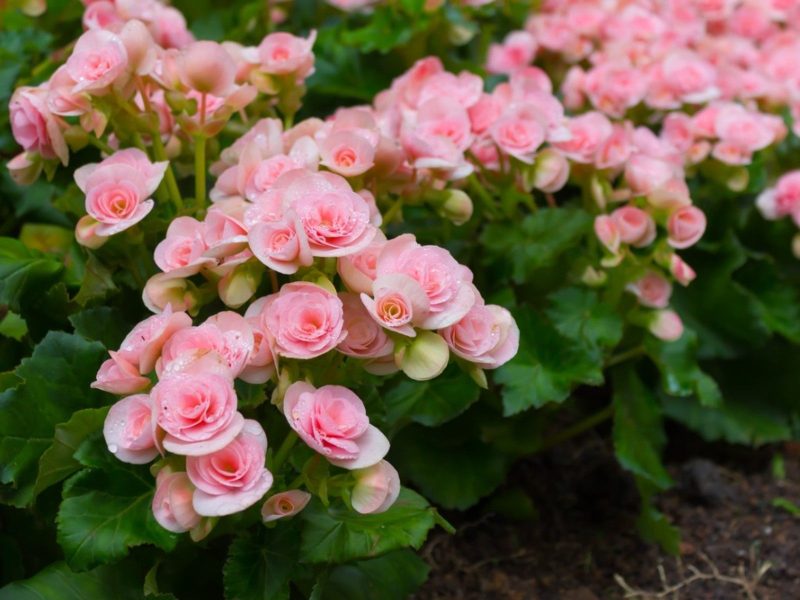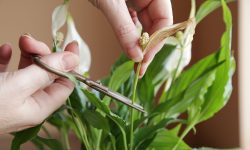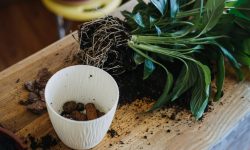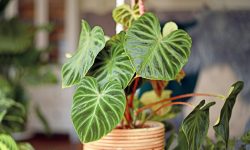Begonias are among the most popular ornamental plants, prized for their vibrant flowers and lush foliage. Proper pruning is essential to keep them healthy, encourage bushy growth, and maximize bloom production. Many gardeners struggle with knowing when and how to prune, often cutting too much or too little, which can reduce flowering or damage the plant. Understanding the correct techniques ensures that begonias remain vigorous and visually appealing throughout the growing season.
Pruning also helps control the shape and size of begonias, making them suitable for containers, indoor spaces, and garden beds. Removing dead or damaged stems prevents disease and improves air circulation. With careful attention and consistent pruning, gardeners can enjoy longer blooming periods and stronger, more resilient plants. In this guide, you will learn step-by-step techniques, seasonal tips, and expert advice to prune begonias effectively. By following these methods, anyone can maintain healthy, thriving begonias that bring color and beauty to any setting.
Understanding Begonia Growth and Bloom Patterns

Begonias grow in a variety of forms, including bushy, trailing, and cane-like varieties. Each type has unique growth habits that affect how and when pruning should be done. Bushy begonias tend to form dense foliage, which can block sunlight if not trimmed properly. Trailing varieties often benefit from selective pruning to maintain shape and prevent tangling. Cane-like begonias grow tall stems that may become leggy over time, requiring careful cutting to encourage lateral growth and fuller appearance.
Blooming patterns also vary among begonias. Some varieties flower continuously throughout the growing season, while others produce blooms in cycles. Understanding when a begonia typically blooms helps gardeners schedule pruning to avoid removing flower buds prematurely. Regular observation is key; noticing new shoots, buds, and growth patterns informs decisions about which stems to trim. By aligning pruning practices with growth and bloom habits, gardeners ensure both healthy foliage and vibrant, prolonged flowering.
Proper pruning not only enhances the aesthetic appeal of begonias but also promotes plant health. Removing old, weak, or overcrowded stems allows light and air to reach inner parts of the plant. This reduces the risk of fungal infections and encourages the plant to allocate energy to strong new growth. Recognizing the interplay between growth habits and blooming cycles is the first step toward mastering begonia pruning. With this knowledge, gardeners can make informed decisions that maximize both foliage density and flower production.
Tools and Preparation for Pruning Begonias
Begonias come in various types, each requiring slightly different pruning techniques. For bushy begonias, begin by removing any dead, yellowing, or damaged leaves and stems. Trim back overcrowded branches to allow light and air to reach the center, preventing fungal infections. Make cuts just above a leaf node or branching point to encourage lateral growth. Maintaining an even, balanced shape prevents the plant from becoming leggy and promotes continuous flowering throughout the growing season. Regular pruning also keeps the foliage dense and vibrant, improving overall plant health.
Trailing begonias need careful selective pruning to preserve their cascading form. Focus on cutting damaged, excessively long, or weak stems while keeping the natural drape intact. Pinching back the tips of healthy stems stimulates branching and fuller foliage, which enhances bloom density. Avoid removing too much at once, as this can stress the plant and reduce flowering. Regular observation every few weeks allows gardeners to maintain an attractive shape, prevent tangling, and encourage continuous flowering in hanging baskets or container displays.
Cane-like begonias, such as angel wing varieties, require strategic pruning to prevent tall stems from becoming weak or floppy. Remove thin or weak stems at the base, and cut older, woody stems to stimulate vigorous new growth. For shaping, make cuts just above a node or branching point to encourage lateral shoots. Supporting taller stems with stakes or ties may be necessary during regrowth. By following these step-by-step pruning techniques for each begonia type, gardeners ensure stronger plants, healthier foliage, and more abundant blooms. Proper pruning keeps the garden vibrant, visually appealing, and full of life throughout the season.
Seasonal Pruning Tips for Maximum Bloom
Spring Pruning for New Growth
Spring is the ideal time to prune begonias for vigorous growth and long-lasting blooms. Begin by removing any stems damaged by winter or frost, as these can drain the plant’s energy and harbor disease. Cutting back old or overcrowded growth stimulates fresh shoots, which develop into strong stems capable of supporting abundant flowers. Carefully observe each plant and thin crowded areas to improve light penetration and air circulation. Removing weak or dead branches also prevents fungal infections and encourages a healthier, more resilient plant structure.
Fertilize lightly after pruning to support new growth and strengthen stems. Pinching back the tips of young shoots encourages lateral branching, resulting in a fuller, bushier plant with more flowering sites. For container-grown begonias, spring pruning ensures the plant remains manageable, attractive, and able to produce more flowers. Consistent observation during this period helps prevent disease, supports strong leaf development, and promotes healthy, sustained flowering throughout the growing season. Following these practices ensures that your begonias start the year robust and ready for maximum bloom potential.
Summer Maintenance Pruning
Summer pruning focuses on maintaining shape, controlling size, and encouraging continuous flowering. Remove spent blooms and trim weak, leggy, or damaged stems. This prevents the plant from diverting energy to fading flowers and encourages the growth of new blooms. Maintaining an even, balanced shape keeps the plant visually appealing in garden beds, hanging baskets, or containers. Regular pruning during summer also allows for better airflow, reduces the risk of disease, and ensures sunlight reaches inner foliage, promoting overall plant health and vigor.
Check carefully for pests or signs of disease during summer pruning. Prune affected areas promptly to prevent spread and strengthen the plant. Regular light pruning every few weeks encourages continuous flowering while preserving strong foliage and maintaining bushy growth. Pinching back growing tips can stimulate lateral shoots and improve overall plant form. By following these seasonal techniques, gardeners can maximize bloom duration, maintain vibrant colors, and keep begonias thriving, resilient, and full of life throughout the warm months.
Encouraging Bushier Growth Through Pinching and Shaping
Pinching and shaping are essential techniques to promote bushier, fuller begonias. By selectively removing the growing tips of stems, gardeners stimulate lateral growth, encouraging the plant to develop multiple branches. This results in denser foliage and more flowering sites. For bushy begonias, focus on cutting just above a leaf node or branching point to maximize branching potential. Regularly pinching tips every few weeks helps maintain a compact shape and prevents the plant from becoming leggy or sparse, which can negatively affect flower production and overall plant appearance.
Shaping is equally important for trailing or cane-like begonias. Trailing varieties benefit from pinching back long, overextended stems to maintain an attractive cascading effect while encouraging fuller growth throughout the plant. Cane-like begonias benefit from strategic pinching to encourage side shoots and strengthen main stems. Maintaining symmetry and balance ensures the plant looks aesthetically pleasing and supports more blooms. Always remove only healthy tips to avoid stressing the plant, and avoid cutting too far back, which can slow growth and reduce flowering potential. Regular observation helps determine which stems need pinching and ensures optimal results.
Combining pinching and shaping with proper pruning techniques maximizes the health, vitality, and visual appeal of begonias. These practices enhance air circulation and light penetration within the plant, reducing the risk of disease and promoting stronger stems. A well-shaped, bushy begonia produces more flowers, maintains strong structure, and remains visually appealing throughout the season. Gardeners who consistently apply these techniques enjoy vibrant, full plants that thrive in containers, garden beds, or hanging baskets. Regular attention ensures begonias grow stronger, bloom longer, and maintain lush, colorful foliage year after year, providing continuous beauty in any garden setting.
Fertilizing and Nutrition Tips for Pruned Begonias
After pruning, begonias need proper nutrition to recover quickly and produce abundant blooms. Using a balanced fertilizer rich in nitrogen, phosphorus, and potassium supports both leaf growth and flower development. Nitrogen promotes strong, healthy foliage, phosphorus enhances root and flower growth, and potassium strengthens overall plant resilience. Apply fertilizer according to package instructions, avoiding over-application, which can damage roots or burn foliage. Regular feeding ensures that pruned plants regain vigor rapidly and continue flowering consistently throughout the season.
Liquid fertilizers or water-soluble options are particularly effective for container-grown begonias. They provide nutrients immediately available to the plant, supporting quick recovery after pruning. Foliar feeding can also supplement root feeding, delivering essential micronutrients directly to the leaves. Combine fertilization with proper watering and light conditions to optimize nutrient uptake. Monitoring the plant’s response allows gardeners to adjust feeding schedules, ensuring the begonia receives the exact nutrients needed without waste or risk of nutrient imbalance.
Organic amendments, such as compost or well-rotted manure, enhance soil structure and nutrient content. These amendments improve water retention, support beneficial soil microbes, and release nutrients slowly over time. Integrating organic materials with regular fertilization creates a balanced approach that nourishes begonias after pruning. Consistent attention to fertilization, combined with proper pinching, shaping, and pruning, ensures strong stems, lush foliage, and prolonged flowering. Well-fed begonias maintain vibrant colors, grow bushier, and remain healthy, resilient, and visually stunning in any garden setting throughout the growing season.
Watering Techniques to Support Pruned Begonias
Proper watering is crucial after pruning to help begonias recover quickly and maintain healthy growth. Pruned plants are more sensitive to water stress, and insufficient moisture can slow new shoot development. Water deeply and evenly, ensuring the soil is consistently moist but not waterlogged. Overwatering can cause root rot, especially in container-grown begonias, while underwatering can stress the plant and reduce flowering. Monitoring soil moisture and adjusting watering frequency according to weather and plant size is essential for optimal recovery.
For container begonias, ensure good drainage by using pots with adequate holes and well-draining soil. Place containers on saucers to catch excess water without leaving roots sitting in stagnant moisture. Water at the base of the plant rather than overhead to minimize wetting foliage, which can encourage fungal diseases. Mulching around outdoor begonias helps retain moisture and regulate soil temperature, reducing water stress and promoting consistent growth after pruning.
Begonias benefit from a routine watering schedule, especially during hot or dry periods. Early morning watering is ideal, allowing water to penetrate the soil before heat causes rapid evaporation. Adjust watering as the plant produces new growth, ensuring young shoots remain hydrated without soggy conditions. Combining proper watering techniques with regular pruning, pinching, and fertilization maximizes plant health, encourages fuller growth, and supports continuous flowering. Well-watered, pruned begonias thrive in containers, garden beds, or hanging baskets, providing vibrant foliage and abundant blooms throughout the season.
Light and Temperature Considerations for Pruned Begonias
Providing Adequate Light
Light is essential for pruned begonias to recover and grow vigorously. After pruning, plants need sufficient indirect sunlight to encourage strong new shoots and abundant blooms. Too little light slows growth, while direct intense sunlight can scorch tender leaves and stems. For indoor begonias, place them near east- or west-facing windows, where they receive bright but filtered light throughout the day. Outdoor begonias thrive in partially shaded areas, avoiding harsh midday sun that may stress the plant after pruning. Observing the plant’s reaction helps adjust light conditions, ensuring it receives optimal exposure for recovery.
Leaves stretching or turning pale indicate insufficient light, while scorched tips suggest excessive sun exposure. Rotating container-grown plants ensures even light distribution and balanced growth. Combining proper light with regular watering and fertilization supports photosynthesis, encourages healthy foliage, and promotes a fuller, bushier appearance. Consistent attention to light requirements after pruning helps begonias recover faster and maintain vibrant blooms throughout the season. Ensuring correct light levels is a simple yet crucial step for long-lasting health and visually appealing growth in any setting.
Managing Temperature for Optimal Growth
Temperature plays a critical role in the recovery of pruned begonias. Ideal temperatures for most varieties range between 65°F and 75°F (18°C to 24°C). Extreme heat can stress the plant and slow growth, while cold drafts or sudden drops may damage tender new shoots and reduce bloom production. For indoor begonias, maintain stable temperatures and avoid placing them near heating vents, air conditioners, or drafty windows. Outdoor plants benefit from protective measures such as shading, frost cloths, or temporary covers during unexpected cold snaps.
Stable temperatures promote root activity, nutrient absorption, and overall plant vigor. Monitoring both day and night temperatures ensures the plant remains within a safe, comfortable range. Combined with proper light, watering, and fertilization, maintaining ideal temperatures allows pruned begonias to develop strong stems, healthy foliage, and continuous blooms. Attention to environmental conditions enhances recovery, encourages robust flowering, and keeps begonias resilient, vibrant, and visually striking after pruning. Gardeners who carefully manage temperature can maximize both plant health and aesthetic appeal throughout the growing season.
Pest and Disease Prevention for Pruned Begonias
Identifying Common Pests
Pruned begonias are particularly vulnerable to pests as new growth emerges. Common pests include aphids, spider mites, mealybugs, and thrips. Aphids cluster on young stems and leaves, sucking sap and causing distorted growth. Spider mites leave fine webbing and tiny yellow or bronze spots, weakening the plant and reducing vigor. Mealybugs appear as white, cottony masses, feeding on sap and secreting sticky honeydew, which can attract fungi. Thrips damage leaves and flowers by creating streaks, silvery marks, or deformed buds, reducing both aesthetic value and bloom production. Early identification of these pests is crucial to prevent infestations from spreading rapidly and compromising plant health.
Regular inspection is essential. Check both upper and lower surfaces of leaves, stems, and developing buds, using a magnifying glass if needed. Isolate newly pruned or vulnerable plants to prevent pests from moving to healthy begonias. Small infestations can often be controlled physically by wiping affected areas or spraying with water. Larger infestations may require safe insecticidal treatments, neem oil, or introducing natural predators. Consistent monitoring, combined with prompt action, protects pruned begonias, preserves their health, supports strong growth, and ensures vibrant flowering throughout the season, creating a lush and pest-free display.
Preventing Disease After Pruning
Disease prevention is crucial for maintaining healthy pruned begonias. Open cuts and tender new growth can be entry points for fungal and bacterial infections. Common diseases include powdery mildew, botrytis blight, and root rot, which can spread quickly if not managed. Proper sanitation, such as sterilizing pruning tools before and after use, reduces the risk of transmitting pathogens. Avoid overhead watering, which keeps leaves wet and promotes fungal development. Instead, water at the soil level to maintain dry foliage and minimize infection risk.
Good air circulation around plants also helps prevent disease. Space plants appropriately, remove fallen leaves or debris from soil surfaces, and maintain well-draining soil to prevent waterlogged roots, a common cause of rot. Monitor plants regularly for early signs of infection, such as discoloration, leaf spots, or mold growth. Prompt removal of affected parts combined with preventive care ensures pruned begonias stay healthy. By maintaining proper hygiene, airflow, and soil conditions, gardeners can reduce disease pressure, support vigorous growth, and enjoy abundant, long-lasting blooms in all pruned begonias throughout the growing season.
Common Mistakes to Avoid When Pruning Begonias
Over-Pruning and Cutting Too Much
One common mistake gardeners make is over-pruning begonias. Removing too many stems at once can stress the plant and reduce flowering. Excessive cutting may remove buds that would develop into blooms, resulting in a sparse or delayed flowering season. Beginners often trim aggressively, believing it will stimulate growth, but begonias respond best to moderate, careful pruning. Over-pruning can also weaken the plant’s structure, making it more vulnerable to pests, disease, or environmental stress.
To avoid over-pruning, focus on removing only dead, damaged, or overcrowded stems. Cut just above a leaf node or branching point to encourage lateral growth and preserve flower buds. Observing the plant’s natural shape and pruning gradually over time helps maintain balance and density. Regular, light pruning supports strong new growth, encourages bushier foliage, and promotes continuous, vibrant blooms throughout the season. Patience and observation are key to avoiding common mistakes and ensuring long-term plant health and beauty.
Ignoring Timing and Seasonal Needs
Another frequent error is pruning begonias at the wrong time. Begonias pruned too late in the season may lose flower buds, reducing the number of blooms. Pruning too early can remove developing growth that is essential for summer flowering. Neglecting seasonal timing may weaken the plant, making it more susceptible to pests, disease, or environmental stress such as extreme heat or cold. Inconsistent pruning can also result in uneven, leggy growth, and may reduce the plant’s overall vigor and aesthetic appeal. Gardeners often overlook these timing considerations, which can significantly affect the health and bloom potential of the plant.
Proper timing is essential for maximizing bloom production and maintaining plant strength. Light pruning in spring encourages new shoots and prepares the plant for a productive season. Summer pruning helps maintain shape, removes spent blooms, and stimulates continuous flowering. Avoid heavy cuts in late autumn or winter unless removing damaged or diseased stems. Understanding the plant’s seasonal needs and aligning pruning practices accordingly ensures begonias remain healthy, resilient, and capable of producing abundant flowers year after year. Careful attention to timing supports strong, attractive growth, encourages dense foliage, and maximizes bloom duration for all types of begonias, keeping your garden vibrant and full of life throughout the growing season.
Best Practices for Pruning Begonias
Pruning begonias correctly ensures healthy growth and abundant blooms. Begin by using clean, sharp tools to make precise cuts, reducing the risk of disease. Remove dead, damaged, or diseased stems first, as this helps redirect energy to healthy growth. Focus on cutting above leaf nodes or branching points to encourage lateral shoots. Light pruning throughout the growing season maintains shape and prevents legginess, while heavy pruning is best reserved for removing old, overgrown, or weak stems. Understanding your begonia variety and its flowering habits ensures you prune at the right time to protect buds and maximize bloom potential.
Pinching and shaping are essential techniques to enhance fullness and structure. Pinching the growing tips stimulates lateral branching, resulting in denser foliage and more flowering sites. For trailing varieties, trim long stems to maintain a cascading effect while promoting bushy growth. Cane-like begonias benefit from strategic tip removal to encourage side shoots and strengthen main stems. Combining pinching and shaping with proper pruning practices creates a visually balanced plant that is both attractive and resilient. Regular monitoring and adjustment of these techniques ensures consistent, healthy growth.
Additional care after pruning is crucial for long-term success. Ensure adequate light, stable temperatures, and proper watering to support recovery. Fertilize with a balanced nutrient mix to boost vigor and encourage continuous flowering. Preventive measures, such as maintaining good airflow, using well-draining soil, and monitoring for pests or diseases, further enhance plant health. Following these best practices consistently allows begonias to thrive in containers, garden beds, or hanging baskets, producing lush foliage, strong stems, and vibrant blooms season after season.
FAQ About Pruning Begonias
How often should I prune my begonias?
Prune begonias lightly throughout the growing season to maintain shape and encourage bushy growth. Heavy pruning is best done annually or when removing old, weak, or damaged stems. Timing ensures healthy development and protects flower buds, resulting in abundant, vibrant blooms.
What tools are best for pruning begonias?
Use clean, sharp pruning shears or scissors to make precise cuts. Sterilize tools before and after use to prevent spreading disease. Sharp tools reduce tissue damage, promote faster healing, and help maintain plant health while shaping and controlling growth effectively.
How do I know which stems to cut?
Remove dead, damaged, or diseased stems first. Cut above leaf nodes or branching points to stimulate lateral growth. Focus on leggy or overgrown stems to maintain balance. Proper stem selection encourages fullness, strong structure, and continuous flowering throughout the season.
Can pruning affect flowering?
Yes, pruning at the wrong time can remove flower buds, reducing blooms. Light, regular pruning encourages new growth without harming buds. Understanding the plant’s flowering cycle ensures pruning supports healthy, abundant flowers without compromising the display.
How can I prevent disease after pruning?
Clean tools before and after use, avoid overhead watering, and ensure proper airflow around plants. Remove debris from soil surfaces and use well-draining soil. These practices reduce fungal and bacterial infections, keeping pruned begonias healthy and supporting strong, vibrant growth.
Conclusion
Pruning begonias is key to maintaining vibrant, healthy plants and abundant blooms. By following proper techniques, gardeners can shape plants, encourage fuller growth, and protect flower buds from damage. Regular attention to timing, tool cleanliness, and environmental conditions ensures strong stems and lush foliage. Combining pruning with proper watering, fertilization, and pest prevention maximizes plant resilience and flowering potential. Consistent care transforms begonias into visually stunning additions to gardens, containers, or hanging baskets. With these practices, every gardener can enjoy long-lasting, colorful blooms and thriving, healthy begonias year after year.






